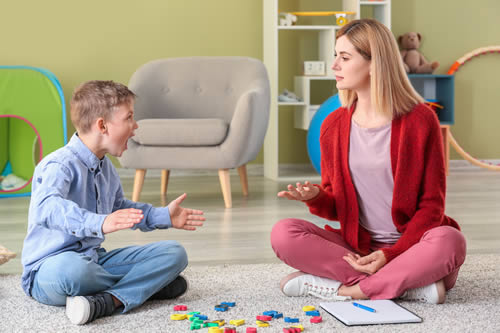Have you heard of ‘interoception’? Many of us have only recently become aware of the word as it’s a ‘hot topic’ in the field of SEN at the moment. In simple terms, it means the awareness of what is going on inside your body, moment-to-moment, and could relate to physical sensations such as hunger, pain or needing the toilet, as well as thoughts and emotions.
Interoception is currently in the spotlight because some health professionals have come round to thinking that it plays a more important role in behaviour than previous believed.
Internal Discomfort More Difficult to Spot

Kim Griffin is an occupational therapist working in London who has extensive experience working with children with special needs. She points out that most children with neurological conditions like autism, ADHD or dyspraxia have sensory challenges. But whereas it’s easy to pick up when something in the external world has unsettled your child – a loud noise, for example, or flashing lights – when something is amiss in a young person’s inner world, it is much harder for parents to identify what’s wrong.
This is partly, she says, because some children have poor awareness of the sensations in their own bodies and may not be able to convey that they are in pain, thirsty or perhaps angry or sad. “It’s not that they are more tolerant of uncomfortable feelings – it’s that their brain hasn’t registered what’s happening,” she explains. “It’s trickier to help because you can’t feel what the child is feeling. I heard of one girl, who was non-verbal, who suddenly stopped walking. Nobody knew why until an X-ray revealed that she had broken her ankle.”
Parents Need to Tune in to their Child’s Behaviour

Because of this, parents and teachers need to be aware of any subtle changes in the youngster’s behaviour, Kim suggests, especially if the child doesn’t have good language skills. “It’s similar to the way all young children act differently when they’re hungry or coming down with something,” she says. “You might want to keep a diary of any unusual behaviour and what happened next so that you can say, ‘Ah! Last time they went very quiet, or screamed, or whatever, xyz happened’.”
However, children with sensory challenges can also be helped to become more aware of how they are feeling, she carries on. “To start with, hot and cold are easy to introduce. You can show them a picture of a temperature gauge and tie it in with the weather. You can say, ‘today is sunny so we need to take our jumpers off’. However, you need to be careful,” she cautions, “as sunny outside doesn’t always mean hot.”
Emotions Also Felt in the Body

Because emotions also cause bodily sensations – anger might make us hot, for instance, or make our throat feel tight – some children with SEN also struggle to register what they are feeling. They might not notice that their frustration is rising until it’s too late and they have a meltdown or confuse anxiety with a tummy ache.
With this in mind Kim has developed a schools’ information pack called, ‘Feel It, Change It’, to help verbal kids learn to regulate their emotions and energy levels. This will be available on her website from spring 2023 along with advice on how to use it effectively.
In addition, she points out that physical sensations can, in turn, trigger emotions – not noticing that you need the toilet till the last minute, for example, can be very stressful. But this is an area that needs more research, she emphasises, as thought processes are also linked to emotions and experts still have a lot to learn about how the nervous system works.
Interoception is Only One Part of the Puzzle

“Interoception is certainly important but it’s helpful to remember that it’s just one aspect of a person’s neurological processes,” she concludes. “The body is constantly trying to keep us in homeostasis – that is, a state of balance – and we don’t always have control over that. For example, anxiety is a survival response. And you can hold back from going to the toilet but sooner or later the bladder will fill up and release urine.
“It’s helpful to focus on improving interoception but a child also needs other things in place in order to be healthy and happy – a calm and safe classroom, for example, or a behaviour-support plan. It’s part of the bigger picture.”




